Air Operations, Carolines - V Fighter Command fighter-bombers attack several targets of opportunity while conducting an armed reconnaissance over the Palau Islands.
- During the night, 868th Heavy Bomb Squadron SB-24s attack Japanese airfields and defenses in the Palau Islands.
[  | |   ] ]
Air Operations, CBI
BURMA
- 39 10th Air Force fighter-bombers support Allied ground forces around Pinbaw.
- 16 P-51s and P-47s attack a bridge and other targets at Bhamo.
- 16 fighter-bombers attack Japanese Army ground forces at Moda.
- 8 P-47s attack the airfield at Lashio and nearby targets of opportunity.
- 4 P-47s attack a bridge in Hsenwi.
- 14th Air Force fighter-bombers attack targets in eastern Burma.
CHINA
- 12 341st Medium Bomb Group B-25s attack stores at Mangshih.
- 6 B-25s attack stores at Changsha.
- 14th Air Force fighter-bombers support Chinese Army ground forces on the Salween River front and attack numerous targets in east-central China.
- 311th Fighter Group P-51s down 2 Ki-44 'Tojo' fighters near Chefang at 1700 hours.
[  | |   ] ]
Air Operations, East Indies V Fighter Command fighter-bombers attack several targets of opportunity while conducting sweeps over the Molucca Islands.
[  | |   ] ]
Air Operations, Europe
RAF BOMBER COMMAND
Daylight Ops:
- 158 Lancasters and 11 Mosquitos of No. 5 Group attack a German supply depot at L'Isle-Adam near Paris.
- In daylight raids, 64 Lancasters and 5 Mosquitos are sent to the oil storage depots at Bordeaux and Ertvelde Rieme near Ghent, 16 Halifaxes and 16 Lancaster are sent to hit 7 flying bomb sites, and 23 Lancasters to the U-boat pens at La Pallice.
- 2 Lancasters are lost raiding flying bomb sites.
Evening Ops:
- 288 aircraft are sent to Bremen. In this total are 216 Lancasters, 65 Halifaxes and 7 Mosquitos. Visibility over the target is clear and the Pathfinders provide perfect marking throughout the raid. Bremen's own records show this to have been the most destructive raid of the war, although only 274 aircraft attack, dropping just over 1,100 tons of bombs. The whole of the center and the northwestern parts of Bremen, including the port area, are devastated.
- 210 Halifaxes, 14 Mosquitos and 10 Lancasters from mainly No. 4 Group are sent to bomb the synthetic oil plant at Sterkrade. Bomber Command documents state the raid is successful and the facility is seriously damaged.
- 1 Halifax and 1 Lancaster are lost.
- 122 Halifaxes, 18 Lancasters and 4 Mosquitos of Nos. 6 and 8 Groups attack Connantre located between Paris and Reims. The target is a railway station and yards 70 miles east of Paris. The Pathfinder marking is accurate and the damage to the target area is severe. This raid marks the end of a long series of raids on the Belgian and French railway systems.
- 108 Lancasters and 5 Mosquitos of Nos. 1 and 8 Groups attack the oil depot and storage tanks at Ertvelde Reime to the north of Ghent. Severe damage is caused to the targets.
Other Ops:
- Support and 139 training aircraft make a diversionary sweep over the Normandy area, 21 Mosquitos are sent to Berlin and 19 to 5 other targets, 11 Halifaxes lay mines off the Biscay ports, 5 aircraft are on Resistance ops, and there are 62 Mosquito patrols and 33 RCM sorties.
- 1 Mosquito is lost on a raid to Harburg.
US 8th AIR FORCE
BELGIUM:
- 1st Bomb Division B-17s attack bridges at Liege and Namur.
FRANCE:
- 43 3rd Bomb Division B-24s attack the Roye/Amy Airdrome while 10 B-24s attack targets of opportunity.
- Escort is provided by 96 VIII Fighter Command P-51s.
- 8th Air Force B-17s and B-24s attack bridges, a marshalling yard, several airdromes, fuel dumps, and an aircraft-engine factory. Three escort fighter groups attack three airdromes during the return flight.
- 323 VIII Fighter Command fighter-bombers attack transportation targets along the Seine River and into Belgium.
- 13 fighter-bombers and 10 of their pilots are lost
NETHERLANDS:
- 1st Bomb Division B-17s attack the Eindhoven Airdrome and a bridge at Maastricht.
US 9th AIR FORCE
FRANCE:
- Approximately 100 IX Bomber Command B-26s and A-20s attack rail lines, an important road junction on the German Army line of retreat, a fuel dump, and an ammo dump.
- IX and XIX TAC fighters and fighter-bombers mount more than 1,000 sorties in support of advancing Allied ground forces, especially in the Paris-Argentan area and along the Seine River.
- 8th and 9th Air Force fighter pilots down 19 Luftwaffe fighers over France during the day.
US 12th AIR FORCE
FRANCE:
- When it is learned that the battleship Strasbourg, cruiser La Gallissioniere, and a former French Navy destroyer and submarine have been moved into a position in Toulon harbor from which they can sally against the DRAGOON invasion fleet and beachhead, 36 321sth Medium Bomb Group B-25s based in Corsica are ordered to conduct an immediate attack aimed at sinking the three warships. Arriving over the ships following a dead-reckoning approach, the B-25s attack from 13,000 feet through intense flak that damages 27 of the aircraft and wounds 12 crewmen. Nevertheless, bombs sink the Strasbourg, the La Gallissioniere and the submarine at their anchors.
- 12th Air Fokrce fighters and fighter-bombers attack rail facilities and German Army defensive positions in the invasion area.
US 15th AIR FORCE
ROMANIA:
- 15th Air Force heavy bombers conduct a particularly damaging rain against five refineries around Ploesti.
- When a mere 35 Axis fighers attack the heavy bomber, 31st Fighter Group P-51 pilots down 9 and drive the rest away.
YUGOSLAVIA:
- 89 15th Air Force heavy bombers attack the Alibunar Airdrome.
[  | |   ] ]
Air Operations, New Guinea V Bomber Command A-20s and V Fighter Command fighter-bombers attack ground defenses near Sarmi and troops and stores at Suain.
[  | |   ] ]
Battle of the Atlantic - Sunderland 'W' of No 201 Squadron RAF is on patrol to prevent U-boats from evacuating personnel from Brest to Bordeaux when she sees a periscope. The aircraft drops 6 depth charges in a perfect straddle of U-107. As the aircraft returned for a second attack, wreckage and oil is noticed coming to the surface.
U-107|
| Class | Type IXB |
| CO |
Leutnant zur See Karl-Heinz Fritz |
| Location |
Bay of Biscay, W of La Rochelle |
| Cause |
Air attack |
| Casualties |
58 |
| Survivors |
None |
|
U-621|
| Class | Type VIIC |
| CO |
Oberleutnant zur See Hermann Stuckmann |
| Location |
Bay of Biscay |
| Cause |
Depth charge |
| Casualties |
54 |
| Survivors |
None |
|
- Escort Group 11, which included the Canadian destroyers Ottawa, Resticouche, Kootenay and Chaudière, is deployed off the approaches to Rochefort when Kootenay reports a firm asdic contact. Ottawa attacks with Hedgehog and an oil slick is noticed on the surface soon after.
- On this day Hitler gave the order for the evacuation of the southern French ports of La Pallice and Bordeau. U-129 is surveyed and found that she needed extensive repairs which could not be done at Lorient. It was decided to scuttle her.
U-129|
| Class | Type IXC |
| CO |
Oberleutnant zur See Richard von Harpe |
| Location |
Bay of Biscay, Lorient |
| Cause |
Scuttling |
| Casualties |
Unknown |
| Survivors |
Unknown |
[  | |   ] ]
Diplomatic Relations Plans are announced for the Allied occupation of Germany.
[  | |   ] ]
Eastern Front The Germans maintain their powerful counterattack in the area of Siauliai, in Lithuania. The 1st Baltic Front is only just able to resist the German onslaught. In the north troops of the 3rd Baltic and the Leningrad Fronts advance north and south of Lake Peipus. In southern Poland Sandomierz, on the west bank of the Vistula, is taken by the 1st Ukraine Front.
LITHUANIA
The Soviet 5th Guards Tank Army moves to the north of the 2nd Guards Army to shield Siauliai, and also fends off attacks by the XXXIX and XL Panzer Corps.[MORE]
[  | |   ] ]
Germany, Planning The Kriegsmarine begins to scuttle its U-boats in French ports now under threat from the Allies. U-123 and U-129 are sacrificed at Lorient and U-78 and U-188 at Bordeaux.
[  | |   ] ]
Italy The US 5th Army takes command of the XIII Corps, British 8th Army, in place. In the II Corps zone, the 85th Division relieves the 91st Division in line below Fucecchio and the 91st begins training near Certaldo.
In the British 8th Army area, the Polish II Corps starts a preliminary attack toward the Gothic Line in the Adriatic sector, crossing the Cesano River with the Italian Corps of Liberation (previously the Utili Division) on the left and the Kresowa Division in the center, and the 3rd Carpathian on the right.
[  | |   ] ]
Northern France Allied troops continue to advance westward toward the Seine. During the night the rearguards of Gen Paul Hausser's 7th Army manage to withdraw to the east bank of the Orne River.
At Chambois, between Falaise and Argentan, units(Poles?) of the Canadian II Corps coming from the north join up with advance guards of the US XV Corps, closing the so-called Falaise gap. A considerable German force is still to the west. The German retreat through the Falaise gap in the past few days has provided unrivalled opportunities for the Allies fighter-bombers since there has been an enormous amount of vulnerable traffic compelled to travel by day on virtually one road.
In 3rd Army's advance toward the Seine forward patrols reach Versailles.[NF]
Field-Marshal von Kluge commits suicide. Once the architech of so many German victories, but now deprived of his command and suspected of being involved in the attempt on Hitler's life, von Kluge takes his own life at Metz rather than be hauled before a People's Court. He leaves a letter for Hitler, in which he writes among other things: 'I do not know whether Field-Marshal Model will be able to restore the position. I hope so with all my heart. But if not, and if your new weapons, in which such burning faith is placed, do not bring success, then, mein Führer, take the decision to end the war. The German people have suffered such unspeakable ills that the time has come to put an end to these horrors.'
[  | |   ] ]
Pacific - The US submarine Hardhead (SS-365) sinks the Japanese light cruiser Natori about 200 miles east of Samar, Philippines.
- The US submarines Rasher (SS-269) and Redfish (SS-395) encounter a Japanese convoy off the west coast of Luzon. Rasher sinks the escort carrier Taiyo, the transport Teia Maru (17,537t), the cargo ship Eishin Maru (542t) and the oiler Teiyo Maru (9849t) and damages the trnasport Noshiro Maru southwest of Cape Bojeador. Redfish damages the merchant tanker Eiyo Maru west of Luzon Strait.
- The US submarine Ray (SS-271) sinks the Japanese merchant tanker Nansei Maru (5878t) off the southern tip of Palawan.
- The Dutch submarine Zwaardvisch sinks the Japanese vessel Kim Hup Soen (48t) in the Strait of Malacca.
[  | |   ] ]
Southern France The US VI Corps is now moving toward Aix-en-Provence while on their left the French forces are attacking nearer the coast toward Toulon and eventually Marseilles. There is also a US advance north toward Gap.
[  | |   ] ]
United States, Politics Roosevelt names Patrick J. Hurley, a former secretary of war, as his special envoy to China. He is to effect an understanding between the Nationalists and Communists.
[  | |   ] ]
Images from August 18, 1944
Oil storage facilities at Ghent destroyed
|
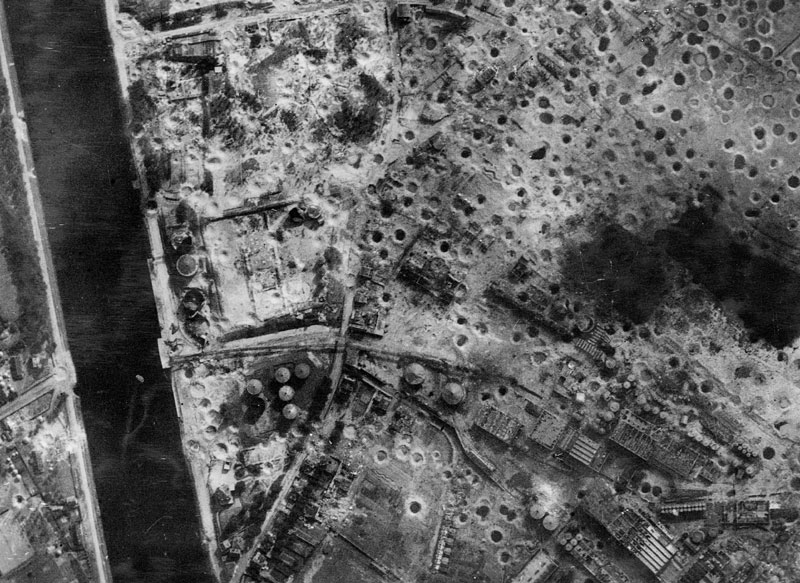 |
|
Abandoned German Panzer IV
|
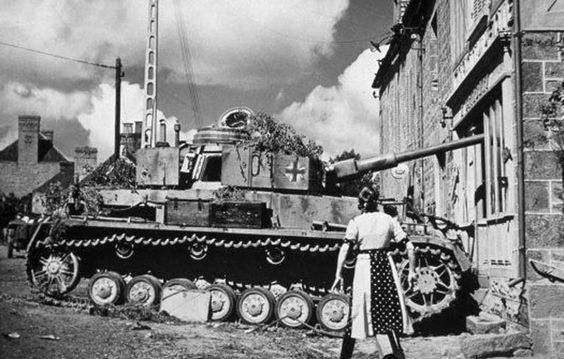 |
|
Canadian Attack at Lambert-sur-Dive
|
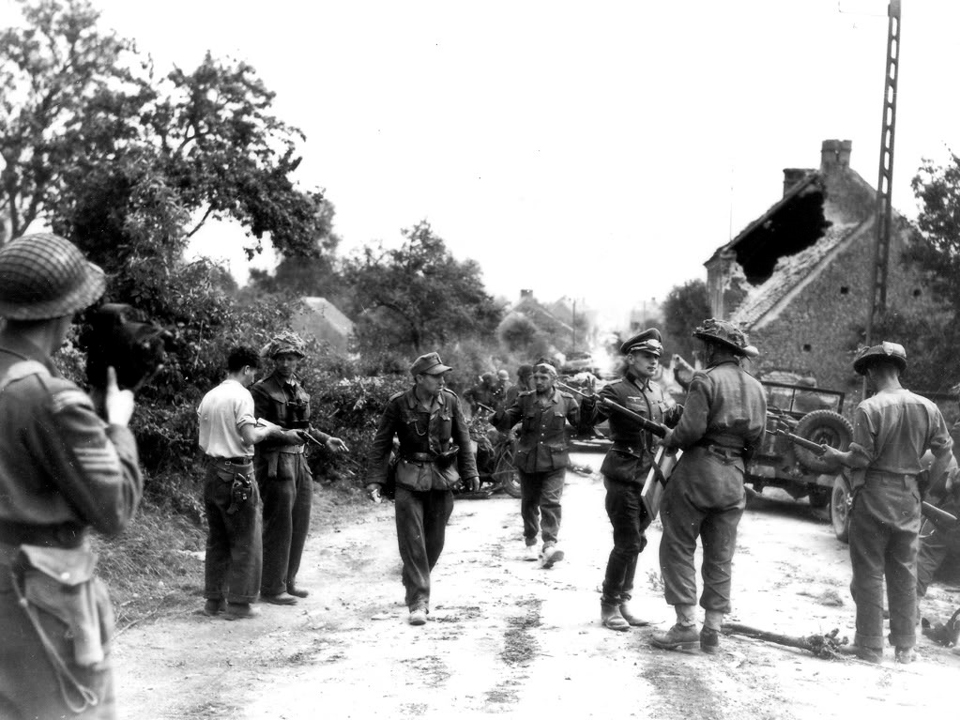 |
|
German Troops Surrendering
|
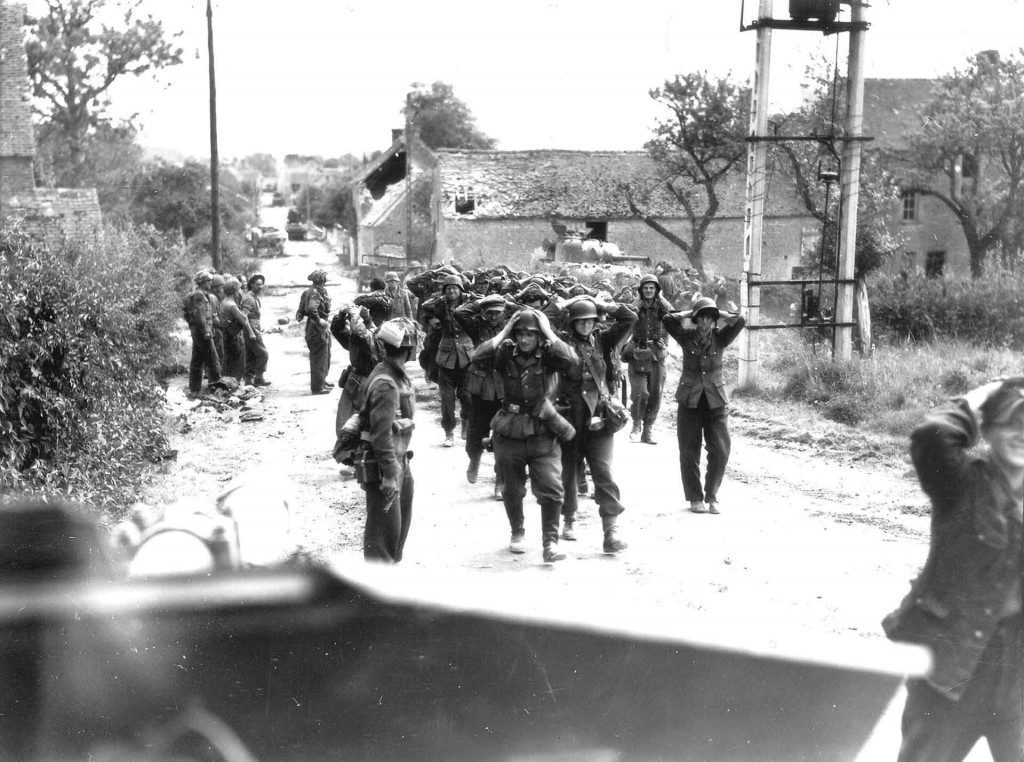 |
|
Canadian Troops Advance
|
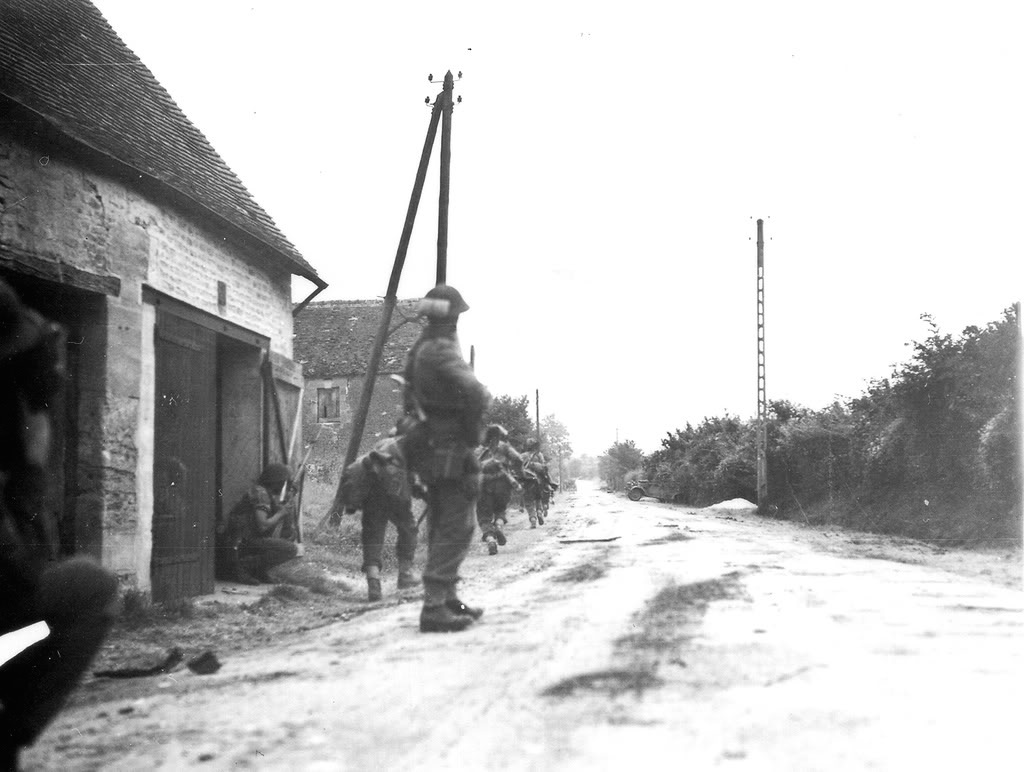 |
|
A Canadian Soldier in St Lambert-sur-Dive
|
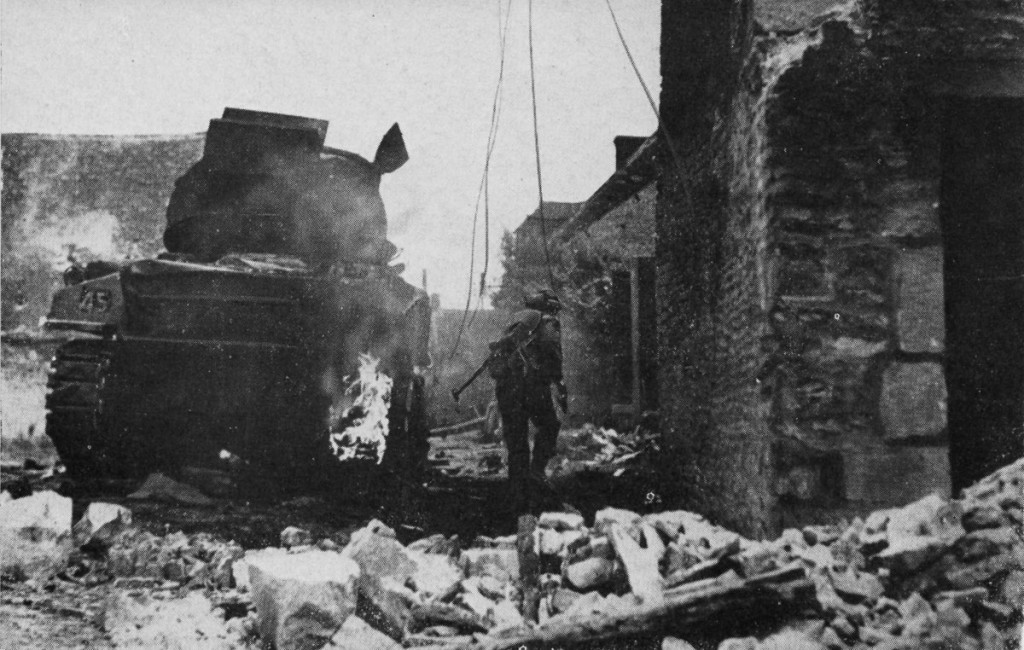 |
|
French Woman Punished by Having Her Head Shaved
|
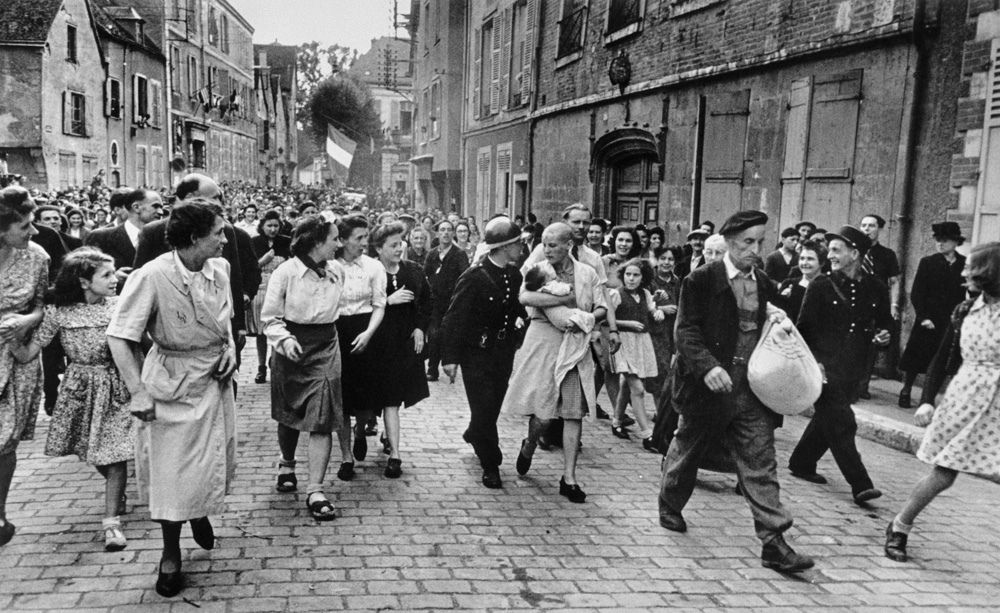 |
|
US Glider Pilots Relax
|
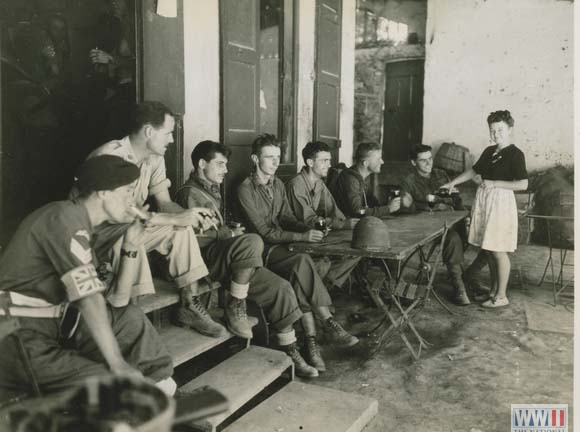 |
|
Spitfires Mk Vc
|
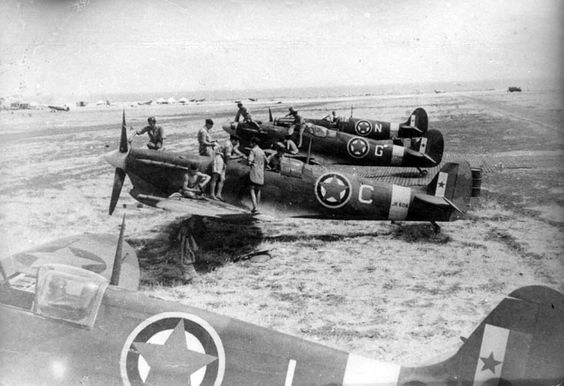 |
|
Cromwell Tank Crews of 2nd Northamptonshire Yeomanry
|
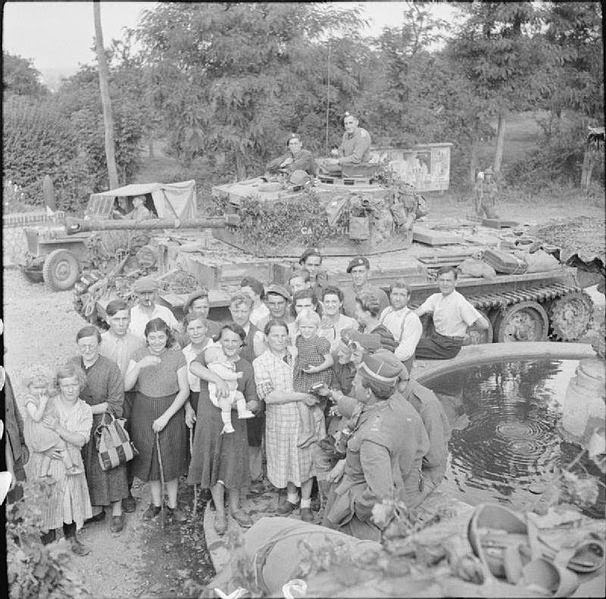 |
|
German Officers
|
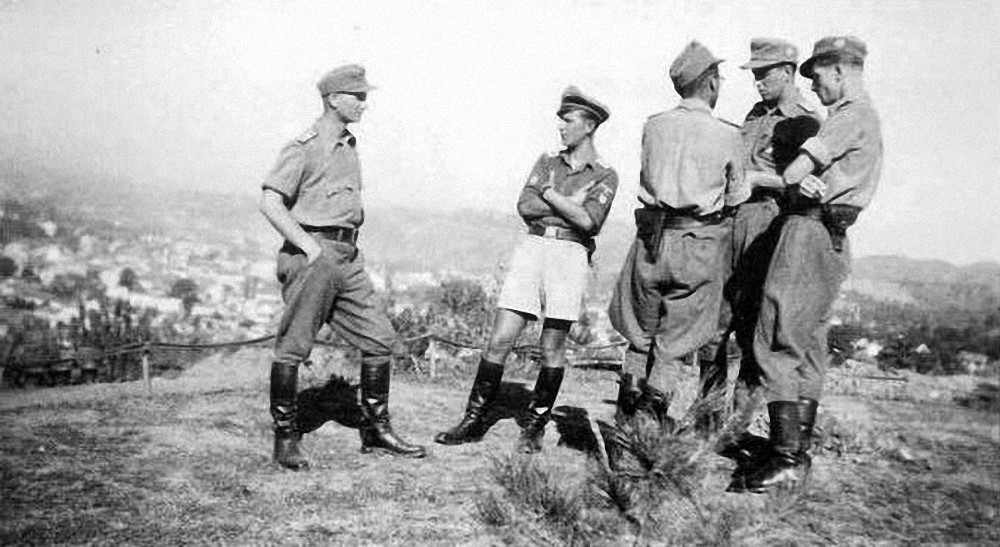 |
|
SS-Panzergrenadiers in Battle of Warsaw
|
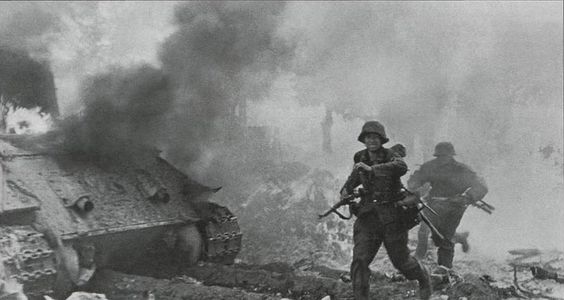 |
|
Medics of the Polish Resistance Transport
|
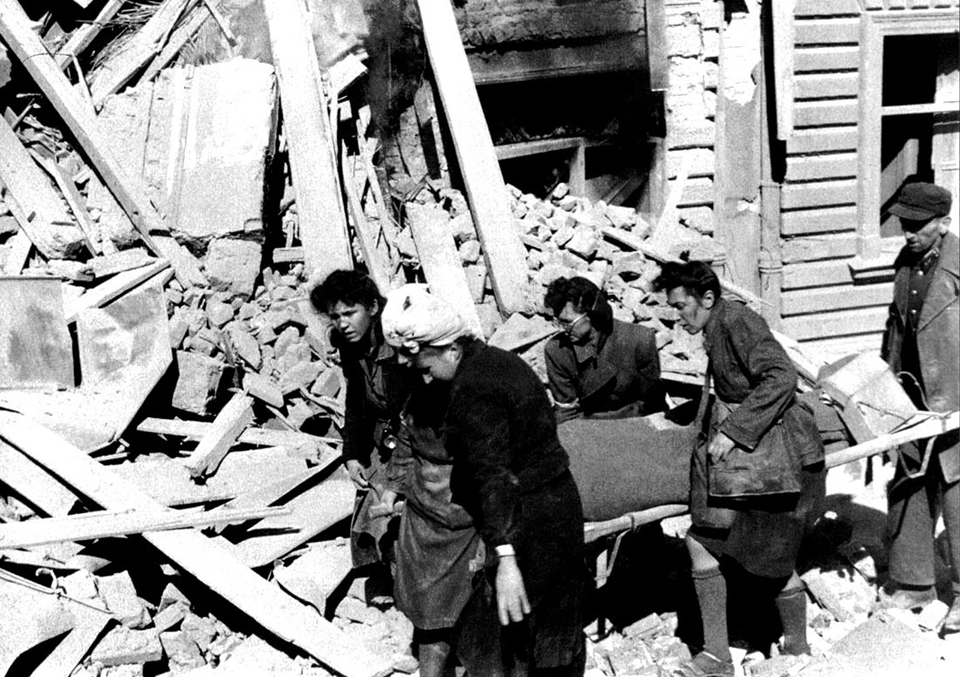 |
|












